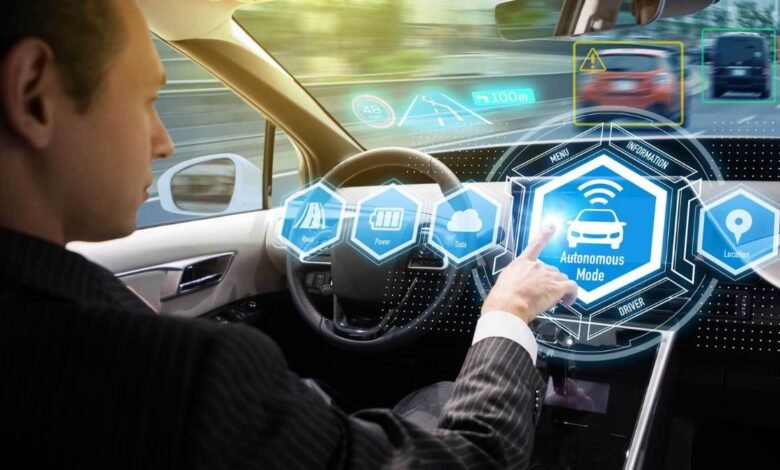The Growth of Autonomous Vehicles: Innovations and Challenges

Introduction to Autonomous Vehicles
Autonomous vehicles, often referred to as self-driving cars, have rapidly transitioned from the realm of science fiction into a tangible reality, revolutionizing the transportation industry. At their core, autonomous vehicles (AVs) are designed to navigate and operate without direct human intervention, relying on a combination of sensors, algorithms, and artificial intelligence to make decisions on the road. The evolution of AV technology represents one of the most significant advancements in modern transportation, promising to reshape how we perceive mobility, safety, and urban planning. This article delves into the innovations driving the growth of autonomous vehicles, explores the challenges faced by this burgeoning technology, and discusses the potential future implications for society.
Innovations Driving Autonomous Vehicle Growth
Advances in Sensor Technology
One of the most critical components of autonomous vehicles is their sensor technology, which enables them to perceive their surroundings with high precision. Over the past decade, there has been significant progress in sensor development, particularly in LIDAR (Light Detection and Ranging), radar, and camera systems. LIDAR sensors use laser pulses to create a detailed 3D map of the vehicle’s environment, allowing for accurate distance measurements and object detection. Radar complements LIDAR by providing data on the speed and movement of objects, while camera systems offer visual information that helps in recognizing road signs, traffic signals, and other vehicles. The integration of these sensors allows autonomous vehicles to build a comprehensive understanding of their environment, which is crucial for safe and reliable navigation.
Machine Learning and Artificial Intelligence
The backbone of autonomous vehicle technology lies in machine learning and artificial intelligence (AI). Machine learning algorithms enable AVs to process and analyze vast amounts of data collected from sensors in real-time, making decisions based on patterns and past experiences. Deep learning, a subset of machine learning, has been particularly influential in enhancing the perception capabilities of autonomous systems. By training neural networks on large datasets, AVs can learn to recognize complex scenarios, such as identifying pedestrians in diverse weather conditions or interpreting ambiguous road signs. The continuous advancement of AI techniques contributes to the increasing accuracy and reliability of autonomous vehicles, bringing them closer to widespread adoption.
Connectivity and Vehicle-to-Everything (V2X) Communication
Connectivity is another key innovation in the growth of autonomous vehicles. Vehicle-to-Everything (V2X) communication technology allows AVs to exchange information with other vehicles, infrastructure, and even pedestrians. This real-time communication enhances situational awareness, enabling vehicles to anticipate potential hazards and make more informed decisions. For instance, V2X can facilitate coordinated traffic flow by enabling vehicles to communicate with traffic lights, thereby reducing congestion and improving overall efficiency. As connectivity infrastructure continues to improve, the integration of V2X technology is expected to play a pivotal role in optimizing autonomous vehicle performance and safety.
Enhanced Computing Power
The computational demands of autonomous vehicles are immense, requiring the processing of complex algorithms and vast amounts of data in real-time. Recent advancements in computing power have been instrumental in addressing these requirements. Modern autonomous vehicles are equipped with powerful onboard computers capable of handling the substantial computational load necessary for real-time decision-making. The development of specialized hardware, such as Graphics Processing Units (GPUs) and dedicated AI chips, has further accelerated the processing capabilities of AVs. These advancements enable faster data analysis, more accurate predictions, and improved overall performance, contributing to the growing feasibility of autonomous vehicle technology.
Challenges Facing Autonomous Vehicles
Regulatory and Legal Issues
The rapid advancement of autonomous vehicle technology has outpaced the development of regulatory frameworks and legal standards. Governments and regulatory bodies face the challenge of creating comprehensive regulations that address the unique aspects of autonomous driving. Issues such as liability in the event of an accident, data privacy, and the certification of AV systems require careful consideration. Additionally, the lack of uniform regulations across different jurisdictions can create complications for manufacturers and operators. As the technology continues to evolve, there is a need for collaborative efforts between policymakers, industry stakeholders, and legal experts to establish clear and effective guidelines that ensure safety and promote innovation.
Ethical and Social Implications
The ethical and social implications of autonomous vehicles are complex and multifaceted. One of the key ethical concerns is the decision-making process in critical situations, often referred to as the “trolley problem” in AV contexts. How should an autonomous vehicle prioritize safety in scenarios where harm is unavoidable? Additionally, there are social implications related to job displacement, as the widespread adoption of AVs could impact employment in driving-related professions. Ensuring that ethical considerations are integrated into the design and deployment of autonomous vehicles is crucial for addressing public concerns and gaining societal acceptance.
Technical and Operational Challenges
Despite significant progress, autonomous vehicles face numerous technical and operational challenges. One of the primary challenges is achieving reliable performance in diverse and dynamic driving environments. AVs must navigate a wide range of scenarios, including adverse weather conditions, complex traffic situations, and varying road infrastructure. Ensuring that autonomous systems can handle these challenges consistently is essential for widespread adoption. Additionally, issues related to sensor calibration, system integration, and cybersecurity must be addressed to ensure the safety and reliability of AVs. Ongoing research and development efforts are focused on overcoming these challenges and enhancing the overall performance of autonomous vehicles.
Public Perception and Acceptance
Public perception and acceptance play a crucial role in the successful integration of autonomous vehicles into society. While there is considerable excitement about the potential benefits of AVs, such as increased safety and convenience, there are also concerns and skepticism. Issues related to trust, safety, and the perceived loss of control are common barriers to acceptance. Engaging with the public through education, transparency, and demonstration programs can help address concerns and build confidence in autonomous vehicle technology. Understanding and addressing public perceptions is essential for fostering a positive environment for the adoption of AVs.
Future Outlook for Autonomous Vehicles
Potential Benefits and Opportunities
The future of autonomous vehicles holds significant potential for transforming various aspects of society. One of the primary benefits is the potential for enhanced road safety. Autonomous vehicles have the capability to reduce accidents caused by human error, such as distracted driving or impaired judgment. Additionally, AVs could improve traffic efficiency by optimizing driving patterns and reducing congestion. The integration of autonomous vehicles into public transportation systems offers opportunities for increased accessibility and convenience, particularly for individuals with mobility challenges. As technology continues to advance, the potential benefits of autonomous vehicles are likely to expand, offering new opportunities for innovation and societal advancement.
Integration with Smart Cities
The concept of smart cities, characterized by the integration of advanced technologies to enhance urban living, aligns closely with the growth of autonomous vehicles. AVs have the potential to play a key role in the development of smart cities by contributing to efficient transportation systems, reducing environmental impact, and improving overall quality of life. For example, autonomous vehicles can be integrated with smart infrastructure to optimize traffic flow, reduce emissions, and support sustainable urban planning. As cities increasingly adopt smart technologies, the synergy between autonomous vehicles and smart city initiatives is expected to drive further advancements and create more connected, efficient, and sustainable urban environments.
Collaboration and Innovation
The successful growth of autonomous vehicles will depend on continued collaboration and innovation among various stakeholders. Industry players, including technology companies, automotive manufacturers, and research institutions, must work together to address challenges, share knowledge, and drive technological advancements. Collaborative efforts can accelerate the development of new solutions, enhance safety standards, and promote the responsible deployment of autonomous vehicles. Additionally, partnerships between public and private sectors can facilitate the creation of supportive regulatory frameworks and infrastructure, fostering an environment conducive to the growth and adoption of AV technology.
Conclusion
The growth of autonomous vehicles represents a transformative shift in the transportation landscape, driven by advancements in sensor technology, machine learning, connectivity, and computing power. While the potential benefits of autonomous vehicles are substantial, including enhanced safety, improved traffic efficiency, and increased accessibility, there are also significant challenges to address. Regulatory and legal issues, ethical considerations, technical challenges, and public perception all play a role in shaping the future of AV technology. As the industry continues to evolve, collaboration and innovation will be essential in overcoming these challenges and realizing the full potential of autonomous vehicles. The journey towards widespread adoption is ongoing, but the progress made thus far offers a glimpse into a future where autonomous vehicles play a central role in shaping the future of mobility.



